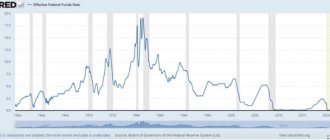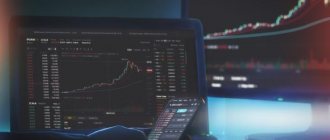Published with the assistance of the International Financial Holding FIBO Group, Ltd.
Project Manager A. Polovnikova
Proofreader E. Aksenova
Computer layout A. Fominov
Translator T. Gutman
Editor V. Ionov
© Kathy Lien and Boris Schlossberg, 2007
Published under license from John Wiley & Sons, Inc., Hoboken, New Jersey
© Publication in Russian, translation, design. Alpina Publisher LLC, 2012
Lin K.
Millionaire traders. How to beat Wall Street professionals on their own field / Ketty Lin, Boris Schlossberg; Per. from English – M.: Alpina Publisher, 2012.
ISBN 978-5-9614-2641-0
All rights reserved. No part of the electronic copy of this book may be reproduced in any form or by any means, including posting on the Internet or corporate networks, for private or public use without the written permission of the copyright owner.
Peter Lynch: who is he and why is he famous?
If there is one legendary investor who not only beat the market, but destroyed it, it is Peter Lynch. Lynch managed the Magellan Fidelity Fund in the United States for thirteen years, from '77 to '90. During this period, it beat the US stock market index S&P 500 for eleven years. His average annual income during this period was a staggering twenty-nine percent.
This means that every US dollar invested in his fund in the year seventy-seven had grown to twenty-seven US dollars by the year ninety.
Luckily for us, Lynch has distilled his secrets into two great books that every investor should own and read several times—Beating Wall Street and Fighting the Tide.
Chapter 2. The one who buys for next to nothing Dana "Dan" Allen
As a young boy, Dana "Dan" Allen was fascinated by the stock market. At age 9 he started reading The Wall Street Journal
, and at the age of 21 he opened an account for trading on the commodity market. Dana always had an uncanny ability to buy for a few cents what costs a dollar. Dealing with commodities, stocks and options, he was invariably able to identify the true value of a financial instrument, often increasing the investment tenfold. By buying quality assets for next to nothing, Dana Allen successfully makes a profit by betting when most market participants are rushing to close positions. Although these tactics are not for the faint of heart and may seem chaotic at first glance, Dana successfully manages the risks and achieves profits that most retailers can only dream of. We had the opportunity to speak with Dana while he was at his home in Nevada.
Peter Lynch's book Outplay Wall Street
In this book, Peter Lynch, one of the most successful investors of all time, explains how to use what you already know to make money in the markets. You'll understand why the smart money isn't so smart and why you may be a better stock picker than the pros, how to follow your hunches and back them up with facts, how to ignore economic reports and choose the right time to buy and sell, and how to determine when what types of shares are right for you.
Chapter 1. The art of playing on the stock exchange
It doesn't matter how hard you hit, it matters how much blow you can withstand without losing your will to win. Success depends on this!
Rocky Balboa[1]
Playing on the stock exchange is a struggle with the market. The traders we interviewed for this book had a lot of insightful thoughts about the art of trading. We have selected a few of the most important ideas - one from each trader - and compiled a short list of recommendations to help those who go out to fight the market.
If the news is good but the stock is falling, buy what's going down.
Buying crashed stocks is not for the faint of heart. For many, daring to do this is like jumping from a plane without a parachute. And yet, this is how Dana Allen makes her living. How does he manage to make a profit from the losses of other traders? He looks for clear signs of discrepancy. The divergence of price, which continues to rise, and momentum indicators, which go down, allows many successful traders to make a successful living. However, Dana Allen goes further, taking into account fundamental factors. When he buys stocks that sell off on good news, he knows that the initial reaction is often driven by a desire to lock in short-term profits. Dana waits for the sellers to do their job, buys shares cheap and resells them at a profit as soon as demand for them reappears. At the same time, he monitors fundamental indicators, trying to buy only quality companies, and his transactions are mostly profitable.
Get to know yourself and your trading style
If you play on the stock exchange, knowing yourself is much more important than choosing one or another trading strategy. Your methodology must match your personality, otherwise you will find it difficult to follow your own rules. Knowing your strengths and weaknesses is the first rule of a successful trader. Here's what Rob Booker says in his interview:
I am a trader who makes 50-100 pips a week. According to my observations, these are the limits of my personal capabilities: when my profit exceeds 50–100 points, I begin to skid. I am overcome with euphoria and, to put it mildly, I am losing the ability to maintain discipline. Therefore, I usually try not to exceed this level, although the systems that I have built allow me to get higher profits.
If you're not very focused and want immediate rewards, long-term strategies, even the most reliable ones, won't work for you—you simply won't have the patience to see things through. Conversely, trying to become a scalper, speculating on rapid price fluctuations, is suicide for a trader who prefers to thoughtfully analyze the situation rather than rely on intuition. It is extremely important to understand what type you are and trade in your comfort zone. There are many ways to succeed in stock trading, but they must suit your personality.
Triple your demo account twice before switching to real money
The brilliant traders who became the heroes of our book give the reader a lot of useful advice. One of the most useful was given by Hussein Harnecker. No one can master a professional skill instantly. Doctors practice on cadavers, lawyers participate in mock trials, and auto mechanics work long hours in a training garage. Practice does not guarantee success, but lack of practice will almost certainly lead to failure. Hussein operates in the FOREX market, where each dealer has a trading platform that allows traders to experiment with virtual money before dealing with real capital. Other financial markets have many software tools that provide the opportunity to engage in paper trading. Another hero of our book, Paul Willett, already having successful experience in stock trading, spent three months in paper trading, deciding to switch to index futures.
Hussein advises achieving lasting success with a demo account before moving on to real money. Implementing this extremely valuable recommendation is not easy. To triple the amount on your demo account, your trading technique needs to have clear advantages that will serve you well later. Although Hussein's rules are not easy to follow, they will teach you the discipline without which you will not succeed in the real market.
Stay calm – control risk with stop orders
While any professional trader would follow this rule to control risk, Frankie Low, a Hong Kong-based FOREX trader, has additional thoughts on the importance of such tactics. Here's what he says:
Many of those who trade up in a currency pair continue to pour money into their accounts when they receive a margin call and buy on the dip, hoping to make up for losses when the market picks up. For example, if you open 10 lots up and the price drops, you add another 20, when it drops even lower, you open another 30, etc. While the ability to quickly recoup losses is tempting, this tactic is very dangerous, and I I use it extremely rarely. By depositing money into an account to replenish margin and adding to a losing position, I am putting myself at the mercy of the vagaries of the market. I can only hope that the price will move where it needs to go, but I am unable to make decisions. The price action may require shorting, but since I'm deep in a long position, the market will take me wherever it wants. Therefore, when I receive a call for additional margin, I close the position and wait for an opportunity to enter the market again - this way I do not allow the market to impose its conditions on me and can again make independent decisions. I have the ability to choose when to enter the market, what product and how much to trade, and such control is extremely important to me.
By not using stop orders, you are putting yourself at the mercy of the market and losing control of your trades. Because trading is the art of controlling a chaotic, often unpredictable market, stop orders are necessary for long-term success.
Protecting your capital means protecting yourself
This is an extremely important aspect of stock trading that is often underestimated. Indy Jones says:
Clint Eastwood would have made a great commodity futures trader, and there's a reason he told Million Dollar Baby that the number one rule in boxing is to protect yourself. I think this also applies to trading on the stock market. Your capital is everything. If you want to trade, protect your capital. No capital, no trading, no life, and no matter what it is about - whether you want to become the number one boxer or make a million in commodity futures - I believe it makes no difference, you need to protect your capital.
The market will forgive you a lot, including unsuccessful, even stupid transactions, but it will not forgive the loss of capital. If you lose your capital, you will not be able to compensate for losses. Therefore, all the traders we spoke with were primarily concerned about preserving capital.
Averaging down is for losers, but entering the market step by step can ensure your success
Most traders will tell you that averaging down is for fools. However, some of the people we interviewed were very successful in using a phased entry strategy. How does the first differ from the second? Statement of the problem. A trader who enters a position in parts assumes that he may have made a mistake in the price at first, and determines the volume of transactions taking into account the circumstances. One such trader is Roland Campbell:
For me this is definitely the key to success. When concluding any trade, I enter the position in stages and exit it in the same way. I noticed: as soon as I buy a currency, it falls by 10 points. This used to make me sad, but now I'm glad I can get it at a better price and wouldn't mind if it dropped another 10 points. I know what price I need, and by entering the position step by step, I will get that price.
Taking the position piecemeal, Roland makes four attempts before giving up. “If a currency continues to fall after I've bought it on the dip four times, I ask myself if the trade is worth taking on. However, nine times out of ten this strategy works.” Roland knows when to admit defeat, and unlike new traders who find it difficult to give up on a bad idea, he always stops himself if a trade doesn't go well. However, most of the time he successfully implements his strategy, making a profit, and this once again confirms that any rule can be broken if there are good reasons for doing so.
Highs and lows only become apparent in hindsight
An old stock exchange saying goes: “No one rings the bell at the top.” Although the highs and lows seem obvious in retrospect, they are much more difficult to understand in the heat of the moment. That's why Tyrone Ball's thought is so valuable. He said: “I began to realize that when you make a trade, you can't determine the top and the bottom. You need to be ready to take money while the price moves in your favor and try to keep losses to a minimum. It seems very simple, but most people can’t do it.” Market profits are as ephemeral as ice cubes in the palm of your hand. Therefore, when making a profit, try to fix it at least partially - this is the key to success for most traders.
Reversals are infrequent and the trend is stable
Ashkan Bolur's deceptively simple remark gives pause to any trader who tirelessly tries to catch the lows and highs. “I usually focus on continuity. “I don’t see the point in looking for a reversal if the trend is moving in a certain direction,” Ashkan says. – The trend itself will tell you when it turns around. Look at any chart that has a reversal pattern and you will see that the reversal takes the entire day. In this case, the reversal occurs once, and the trend is stable until a turning point occurs.” Ashcan argues convincingly that the best trades are made in the direction of the trend because, like physics, price stays in motion until a stronger force counteracts it. He believes that until a turning point occurs, it is much more productive to trade in the direction of the main trend.
The last 25 percent of a position can generate the most profit
Everyone wants their profits to grow, but in real life the path to wealth is rarely straight and smooth. Often the price wins back a significant part of the increase, or even the entire increase, and a lot of inexperienced traders are left empty-handed. However, Paul Willett has come up with a way that allows you to lock in part of the profit immediately, without missing out on the opportunity to take advantage of further growth. What's interesting about this approach is that, as Paul discovered, leaving even a small portion of a position open can make a significant profit.
How does this strategy work? Let's assume that we are trading the Paul method with a position of 20 contracts. The stop order is placed at 1.00 points from the entry into the trade on ER (mini futures on the Russell 2000 index). When the price rises 1.00 points, Paul sells five contracts, moving his stop to breakeven. When the price rises by 2.00 points, he sells the next five contracts, and at +3.00 points, he sells another five. At +5.00 he sells two more contracts and at +7.00 he sells the remaining three. Overall, the position earns him +61 points, of which 31 points - more than 50 percent - come from the last five contracts, representing only 25 percent of the total trade volume.
Paul teaches us that a small portion of a position can make a big profit.
Let your money work for you
In the pursuit of capital gains, many traders often overlook the enormous opportunity that interest rates provide. However, Marcelino Livian is not like that. Like big banks and the best hedge funds, Marcelino always makes sure he earns interest on his open positions. This is why, when trading FOREX, he always enters into transactions on currency pairs with a large difference in interest rates - this makes the average price of entry into the market more profitable even before the position begins to make a profit. Although this method is not as impressive as the rollicking pressure of scalpers, it gives no less profit, and therefore deserves to be taken seriously.
Defeat the computer with its own weapons - use trial orders
Today, almost 70 percent of NASDAQ trades are completed using automated systems. Many traders believed that the advent of electronic trading would mark the end of the face-to-face market, but Steve Ikow not only adapted to the new order of things, but also learned to use the logic of software implementation of algorithms to his advantage. Steve says, “A lot of NASDAQ trading is now done using black boxes.” So often I have to check the price to see where the market is. If, when opening a long position, I put out offers to buy, raising the price, and see that other sellers are following me, I know that I was not mistaken. If I make an offer for sale and see that I am left alone, then there are no aggressive sellers. So, by placing bid and ask orders, I receive information about the market.” Whether you are a person or a machine, in the financial market you are either a buyer or a seller. By constantly testing the machines' logic, Steve discovers their true intentions and uses this information to make profitable deals.
Peter Lynch "Fighting the Tide"
This book presents the investment wisdom of one of the world's most successful mutual fund managers. Peter Lynch's investment strategy has made him popular among investors, big and small. An investor believes that an important key to investing is knowing that stocks are not mere pieces of paper. Each stock has a company associated with it, and a reason why corporations and their stocks perform the way they do.
Peter Lynch shares with you techniques on how to become a pro at the company and how you can build an investment portfolio that will generate profits based on your own insights as well as simple research you can do yourself.










